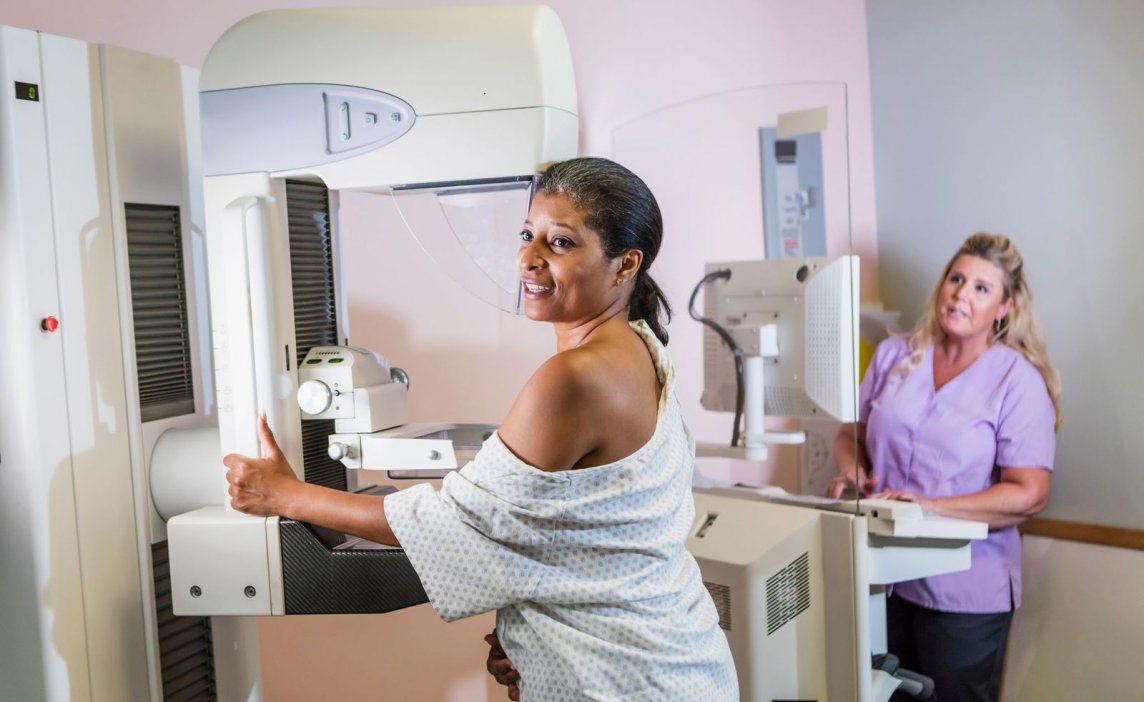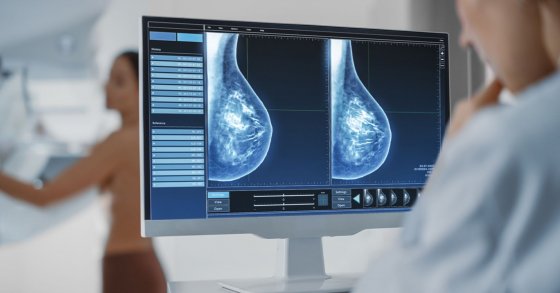Connecticut Breast Imaging: Screening Saves Lives

The detection of breast cancer has come a long way since it was first recorded in ancient Egypt. In 2020, 64 percent of patients who were diagnosed at a localized stage with breast cancer had a 99 percent survival rate for the next 5 years.
The detection of breast cancer has come a long way since it was first recorded in ancient Egypt.
In 2020, 64 percent of patients who were diagnosed at a localized stage with breast cancer had a 99 percent survival rate for the next 5 years. Hispanic women living in the United States have a one-in-10 chance of being diagnosed with breast cancer during their lifetime, putting them in their own class of statistics. Breast cancer screenings save lives, and early detection is key to avoiding the consequences.
Dr. Madhavi Raghu, Medical Director of Breast Imaging, explains, "Our specialized radiologists are all deeply committed to...ensuring every patient has access to the highest quality mammogram services at affordable prices,” she says. “We take pride not just in our medical excellence, but in the compassionate way we treat every single one of our patients.”
Many people are familiar with cancer screenings and mammograms as they are an extremely effective method of prevention. Mammograms are a powerful invention and as most agree, a lifesaver due to its role in helping to detect breast cancer in early stages. This procedure is also used in conjunction with others, to confirm a diagnosis and care plan for patients.
What’s the Difference Between 2D and 3D Mammograms?
A 2D mammogram and a 3D mammogram feel no different from one another. A 2D mammogram, also known as conventional digital mammography, is a mammogram procedure where only two images are taken of each breast. A 3D mammogram on the other hand, is more advanced and has a higher resolution. This type of mammogram takes multiple pictures of the breast tissue from a lot of different angles.
What is an Ultrasound-Guided Breast Biopsy?
Ultrasound-guided breast biopsies are used by doctors to check for malignancies. Your doctor might suggest an ultrasound biopsy if an area in the breast exhibits one or more concerning characteristics. In an ultrasound-guided breast biopsy, doctors use sound waves to locate and accurately sample an abnormality or lump in the breast tissue. The procedure involves removing breast tissue samples to examine under the microscope. The tissue samples are acquired through a hollow needle, which makes the procedure much less invasive than a surgical breast biopsy. This procedure is relatively painless and takes about an hour to complete from start to finish.
Procedures can be daunting and we understand that questions may arise. Here are a few of the most common questions patients ask.
Can I Get a Mammogram While Breastfeeding?
The short answer is YES. Breastfeeding mothers are able to have mammograms. Regardless of whether you are breastfeeding or not, any changes or abnormalities in your breast should be evaluated with the same amount of concern. There are a few instances where mammography is not recommended for nursing mothers. For example, it is not always advised for high-risk (BRCA – BReast CAncer gene) women under the age of 30. A healthcare provider at Connecticut Breast Imaging will be able to walk you through your alternatives and what’s best for you.
Can You Have a Mammogram With Implants?
Although there are a lot of rumors flying around that have created fear and confusion, the truth of the matter is that breast implants are not a deterrent to getting a mammogram or breast cancer screening. The one thing to understand is that breast implants are mostly made of silicone or saline, and this material can interfere with the mammography procedure. Fortunately, there are effective solutions to manage this and obtain the valuable images needed to detect early-stage breast cancer for those with implants.
Is it Safe to Wear Deodorant During a Mammogram?
Nope!
Although you are undoubtedly accustomed to wearing deodorant first thing in the morning, you must avoid doing so prior to your mammogram. Deodorants and antiperspirants can potentially alter results because of some of the ingredients in them, such as aluminum and other metals. You need to avoid using your deodorant because even the tiniest bit of metal on you during your procedure could lead to a misdiagnosis. But don’t be concerned, the office provides wipes to clean under your arms if you forget.
Connecticut Breast Imaging
Founded in 2010, Connecticut Breast Imaging is a highly regarded innovator in the field of comprehensive breast imaging and diagnosis. The practice’s focus on patient-centered care has earned it recognition in the State of Connecticut Employee Network of Distinction for Breast Biopsies. With three convenient locations in Danbury, it serves patients Monday through Friday, and also offers evening and Saturday hours. Spanish speaking staff is available to help patients as needed. For more information or to schedule an appointment, please call: 203.426.3002.








